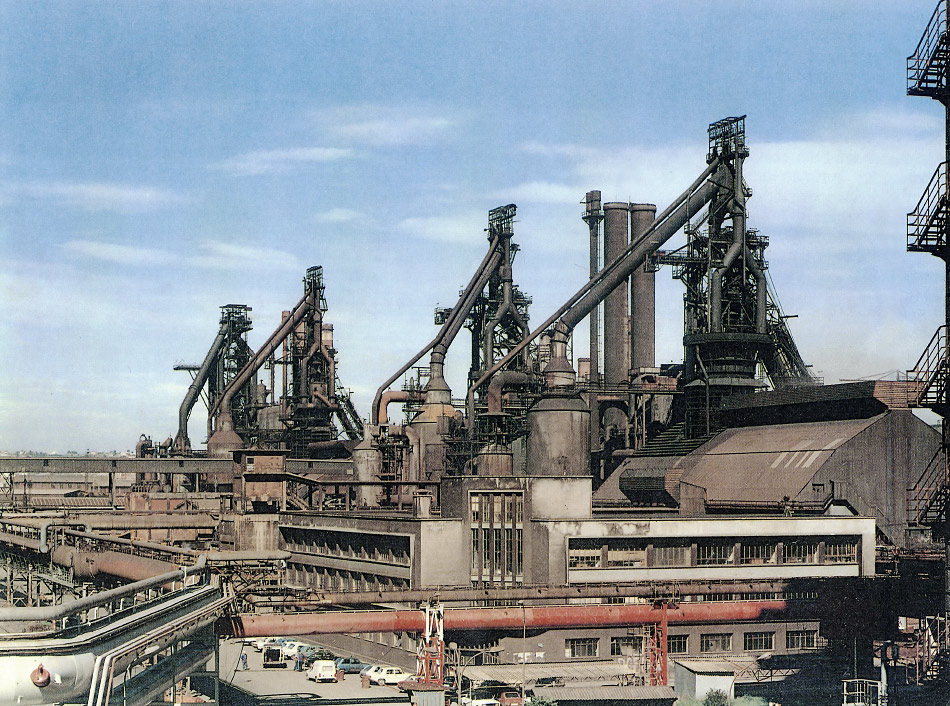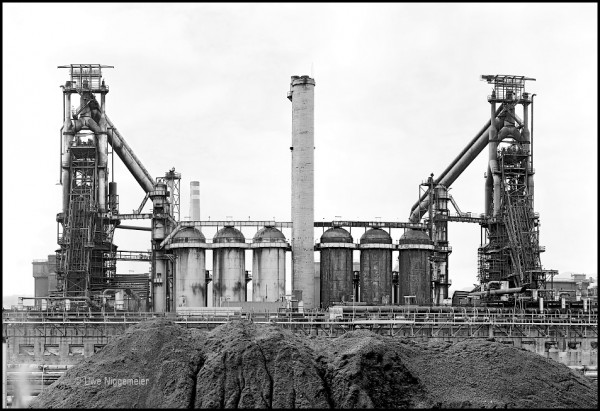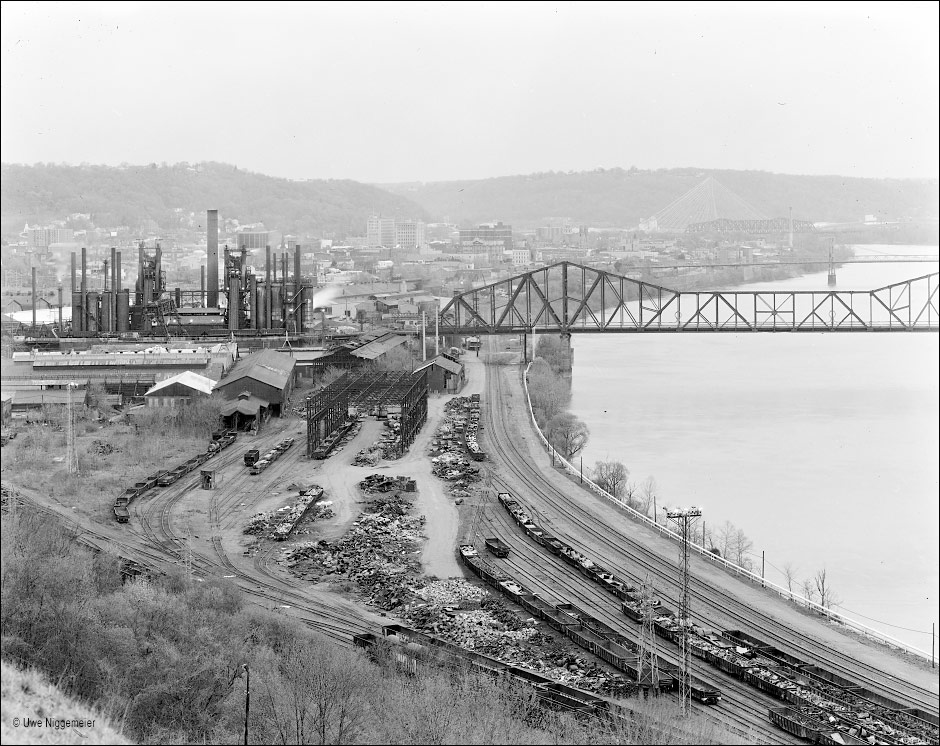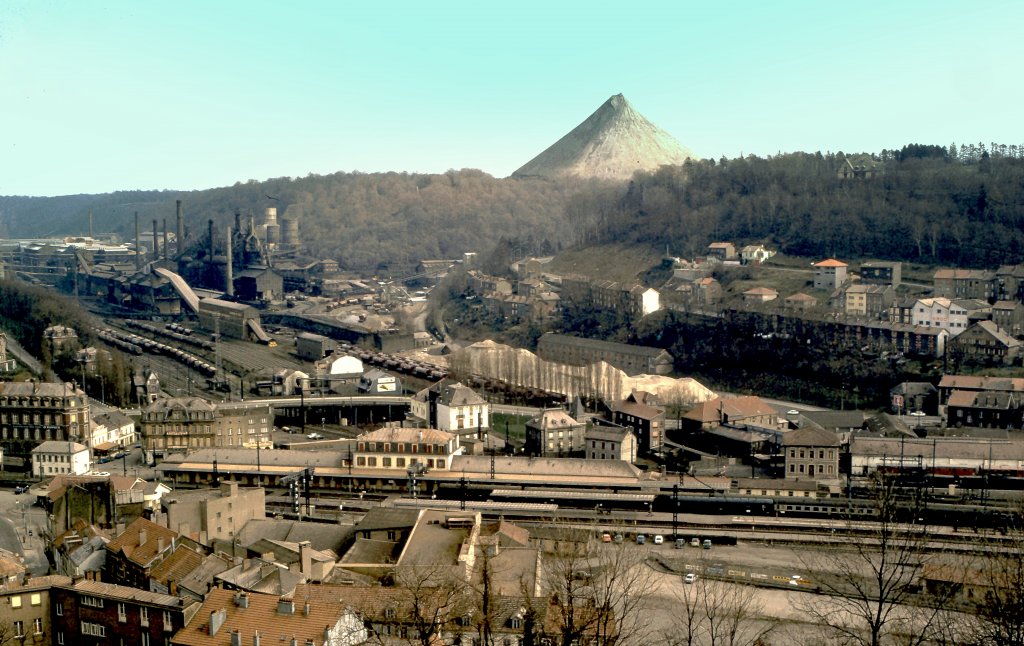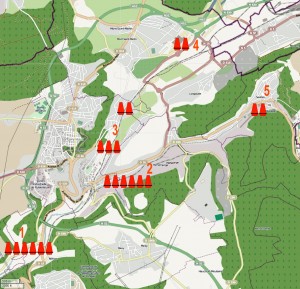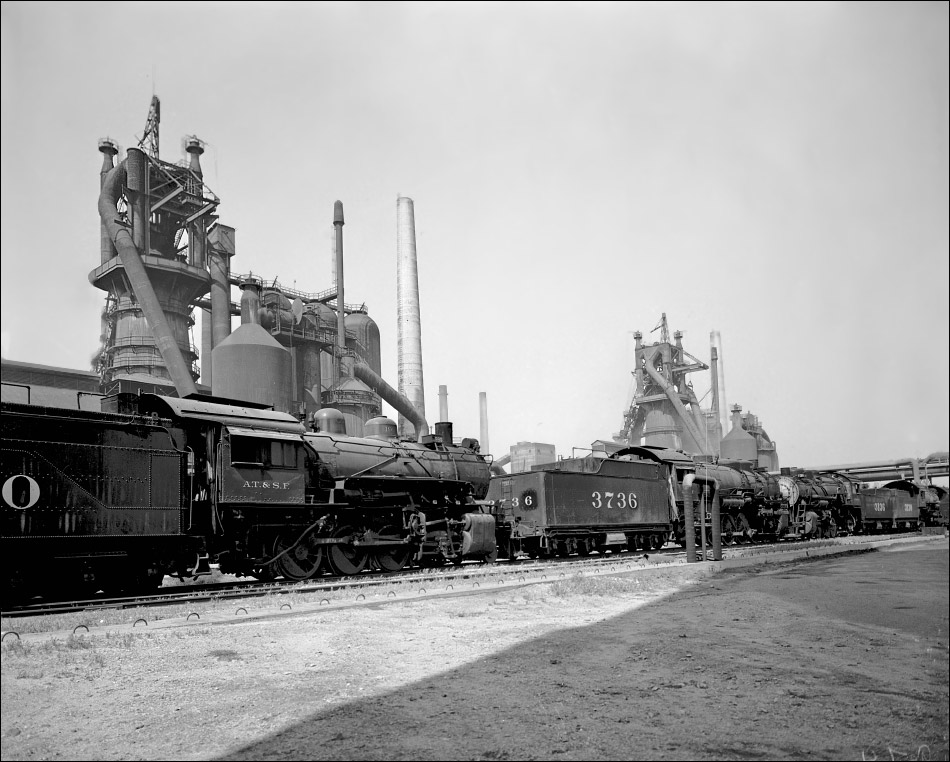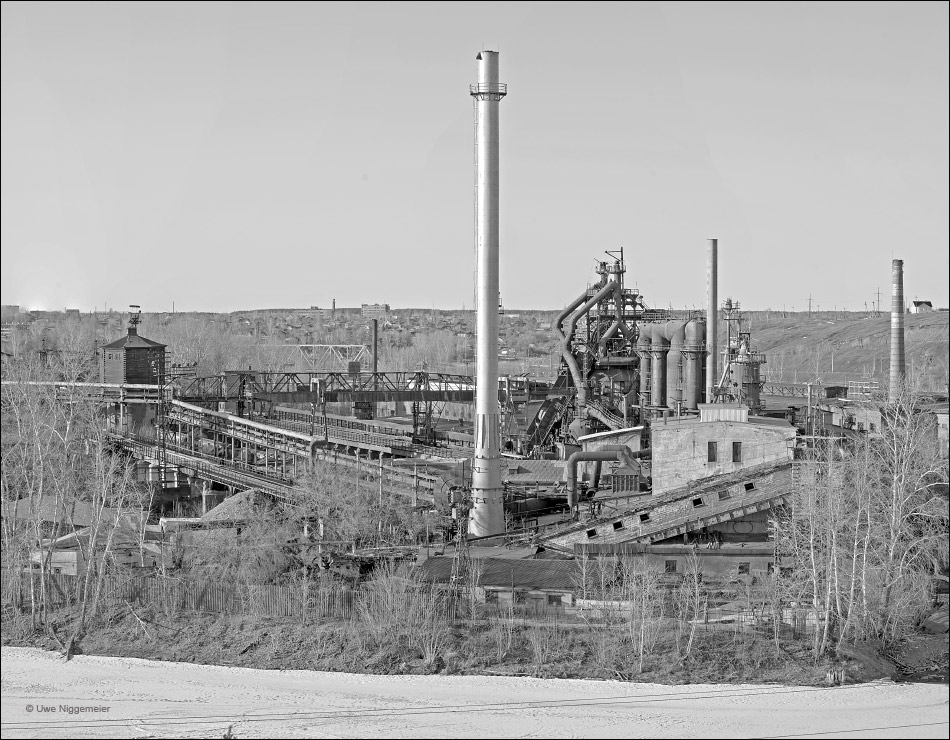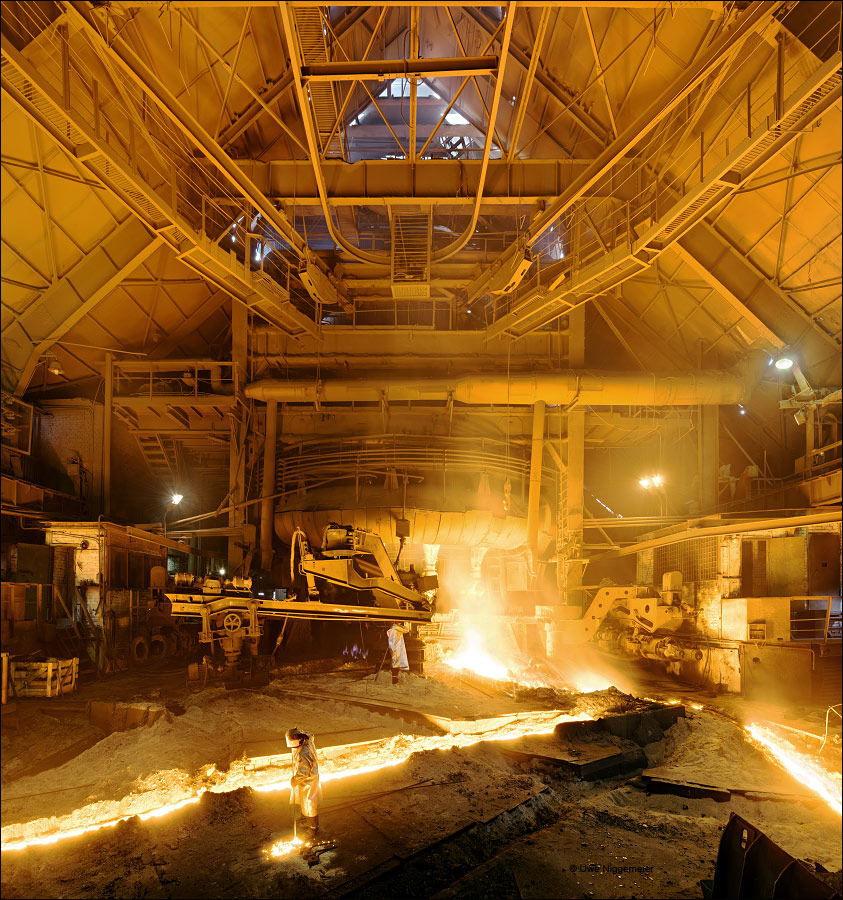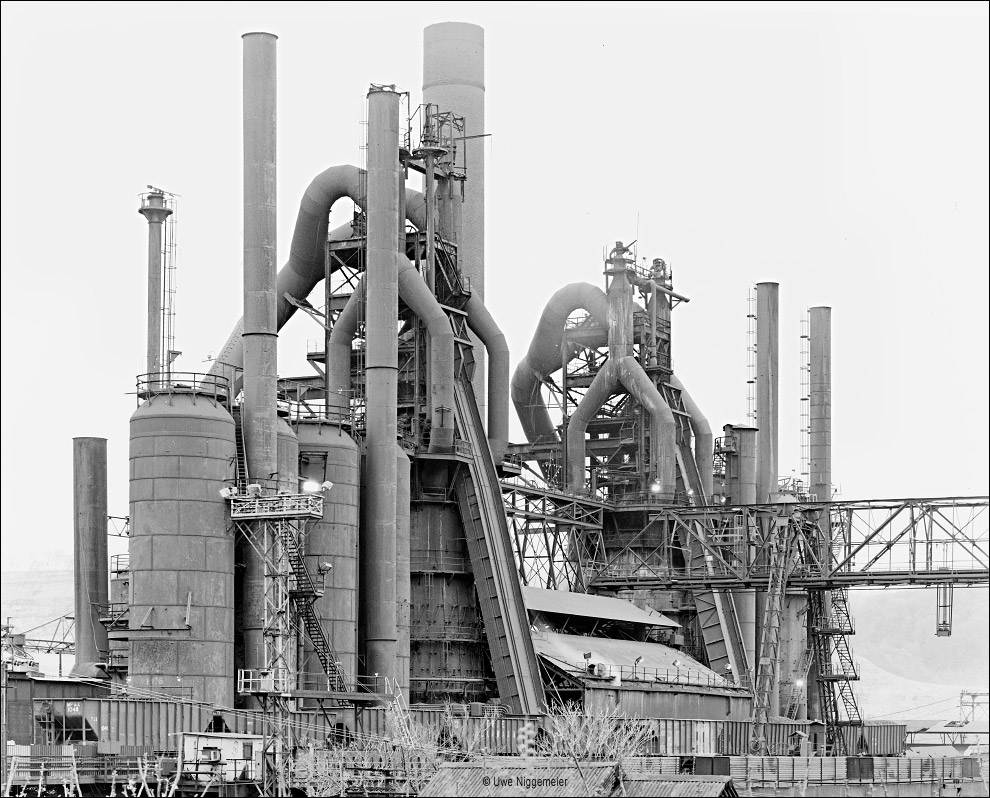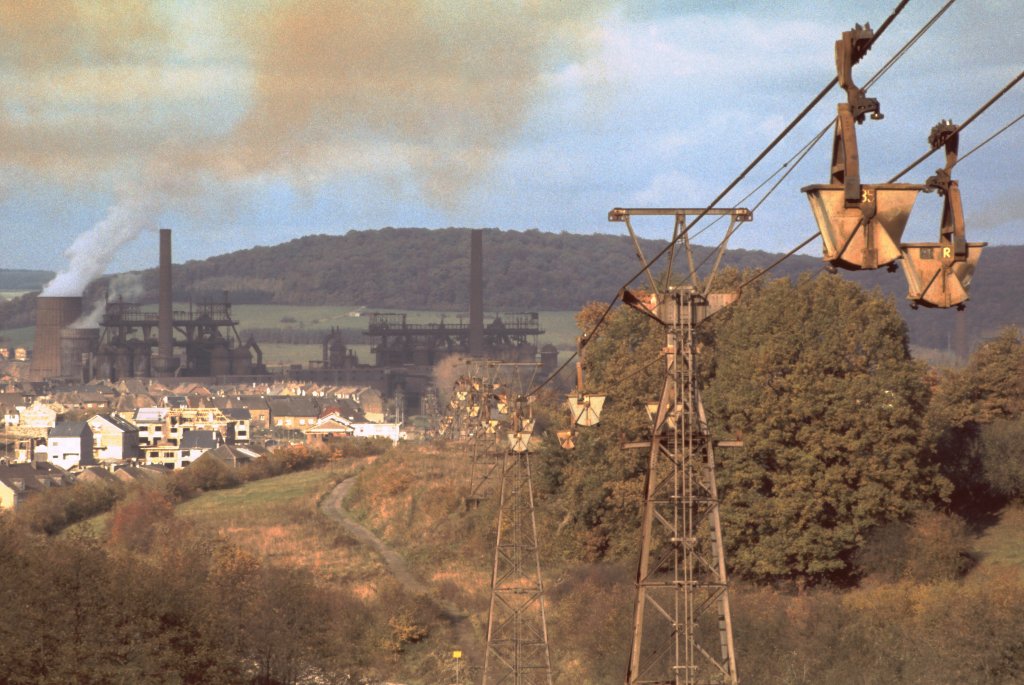
The blast furnaces of S.A. Métallurgique et Minière de Rodange-Athus (MMRA) in Rodange, Luxemburg and the the ropeway that connected them to the iron ore mine Doihl.
Both were closed in 1978. Two rolling mills still exist here.
Tag Archives: Blast Furnace
Vintage Image #9
Blast furnaces Carmen (named after Carmen Polo, Franco’s wife), Joaquina, Rosario and Carmen IV in Aviles, Spain. Later called blast furnaces 1-4.
The furnaces were built in between 1957 and 1969 by the public enterprise ENSIDESA (Empresa Nacional Siderúrgica Sociedad Anónima). Hearth diameter was 8,69-8,99 meter.
Furnace 1&2 were shut down in1989 and furnaces 3&4 in the mid 1990ies after the hot metal production was translocated to the newer furnaces in Gijon.
By 2001 all furnaces were dismantled.
Steubenville
Longwy
In the 1960ies the small town of Longwy, France (pop. 60000) still housed more than 20 blast furnaces. A unique density.
The mills were running on local iron ores of a rather poor quality that became uneconomical in the 1970ies with high quality iron ore shipped into Europe from overseas.
35 years ago, after the announcment of La Chiers’ closure, Longwy’s steel workers started their long and exceptional violent struggle to keep their jobs.
Since the closure of Arcelor’s wire rolling mill in 1998 there is no more steel industry in town.
Jean-Marie Ottelé site: www.industrie.lu is a unique source of information about the Terre Rouge (Red Earth) steel industry.
1: Cockerill-Ougrée-Providence
Founded: 1865.
Closed: 1987
2: Lorraine-Escaut
Founded 1835
Closed 1987
3: Hauts Fourneaux De La Chiers
Founded: 1881
Closed: 1979
4: Aciéries de Longwy
Founded: 1880
Closed: 1978
5: Hauts-Fourneaux Réunis de Saulnes et Uckange
Founded: 1872
Closed: 1991
California Furnaces
The least thing one would expect more than 2000 miles west of the rustbelt and just 50 miles out of Hollywood is a fully integrated steel mill.
But it was there, built in 1942 by Henry J. Kaiser on a former hog farm and ,mostly ,dismantled in the late 1980ies.
In the early 1940ies Kaiser Industries were in search for a steel plate supply for their nearby Richmond shipyards where more than 700 vessels, mostly “Liberty Ships” were built during WWII.
In 1942 ground was broken in Fontana and by 1943 a coking plant, one blast furnace (“Big Bess”) with a capacity of 1200 tons/d and an open hearth shop were under fire.
A 148″ plate mill was added in 1943 and the 86″ hot strip mill started in 1950.

In it’s heyday the mill ran four blast furnaces(hearth diameter 8,7 -8,9 meter) and installed the second BOF steel making shop in the U.S. as early as 1955.
In the 1960ies the location 50 miles away from the coast (imposed by the U.S. Army) at the so called “Inland Empire” became an increasing problem with all raw materials having to be hauled in by rail.
In a last attempt to make the plant competitive a new BOF shop and a continuous caster were built in 1978 to be closed down for good already in October 1983.
Kaiser Steel filed bancruptcy and the plate and hot strip rolling mills were taken over by California Steel Industries in 1984, supplied with slabs from overseas.
The plate mill was sold to the Oregon Steel Company in 1989 and abandoned in 1994.The 86″ hot strip mill is still active.
The remaining iron and steel making facilities were occasionally used by nearby Hollywood studios as a film set (Terminator2) and later dismantled.
The BOF shop was bought by the Capital Iron & Steel Co and shipped to China in 1993.
The ground is now overbuild by a car race track.
Nice historical feature.
Nizhny Tagil Region
The Ural region is a cradle of the Russian iron and steel industry.
Based on it’s rich iron ore deposits a vast number of charcoal fired blast furnace sites emerged in the 18th century. Most of these are gone today, replaced by the huge combines of the communist era. A few have survived, mostly rusting away in the harsh climate of the eastern Ural:
The Verhnesinyachihinsky Metallurgical Plant in Werchnjaja Sinjatschicha was founded 1769 and went bancrupt in 2012.
The Alapaevsk Iron Works origin from 1704 and seem to be idled by now.
The Kuibyshev Metallurgical Plant in Nizhny Tagil goes back to the Demidov iron company from 1725 and was closed in 1987. It hosts a museum but seems to be in a rather poor condition and seldom opened to the public.
Images at Stahlseite.de .
Steel From The Steppe
Deep down in southern Russia, close to the Kazakh border, the Ural Steel mill in Novotroitsk was founded in 1955 under the name Orsko-Khalilovsky Iron-and-Steel Works.
In the same year blast furnace no. 1 went into production.
The first steel was produced at open-hearth furnace no.1 in 1958.
In 1960 the 2800-mm plate rolling mill no.1 was installed.
A section rolling mill was put into operation in 1969.
In 1978 a 800-mm wide strip universal rolling mill was commissioned .
The EAF Shop was built in 1981.
1983 – The first continuous casting machine was put into operation at the EAF shop.
Today Ural Steel runs a coking plant,four blast furnaces, two electric arc furnaces (100 ton each) and four rolling mills.
Further images at Stahlseite.
Vintage Image #7
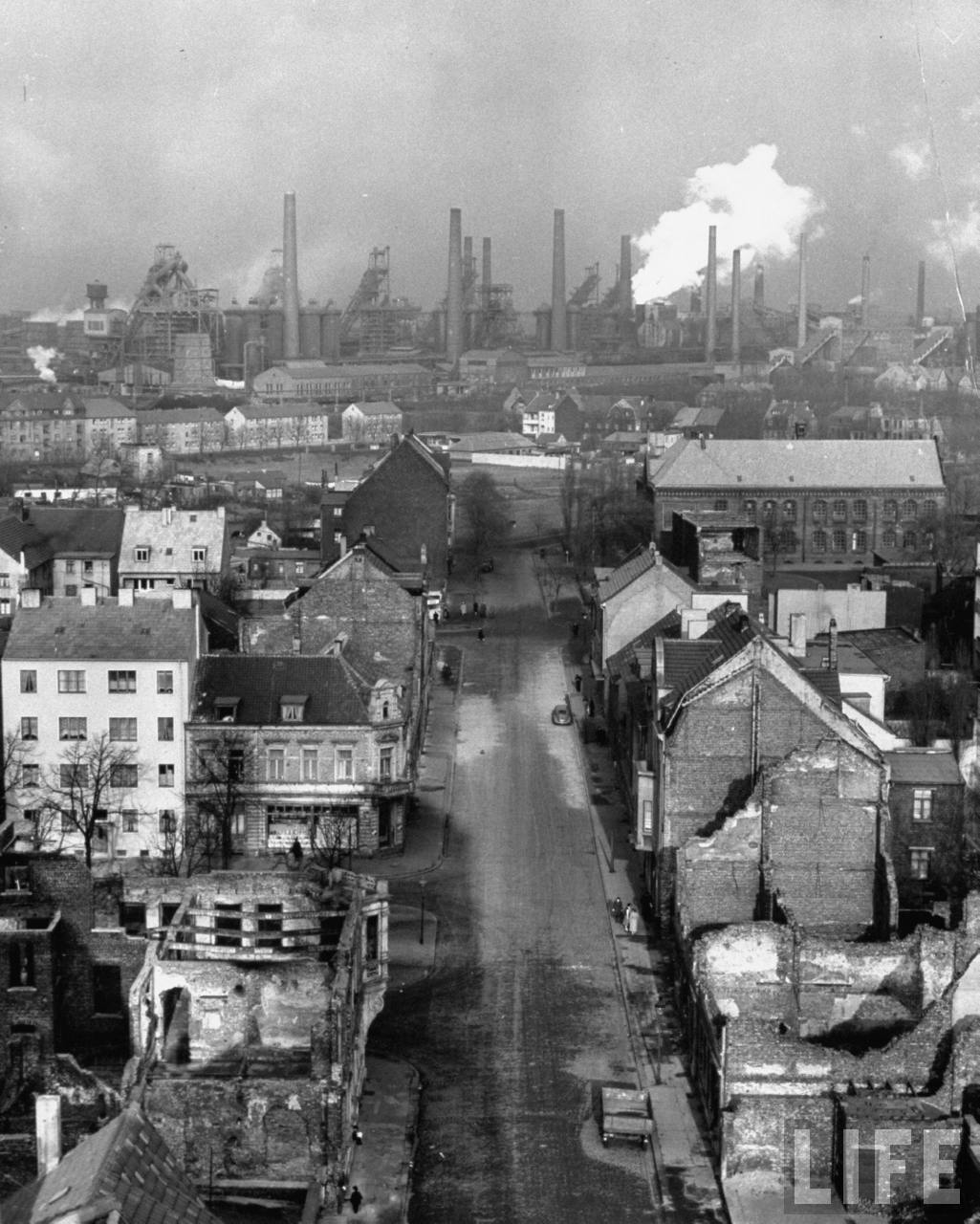
The image done in 1953 shows the August Thyssen Hütte steel works in Duisburg Hamborn, Germany.
The furnaces shown are, left to right: 7,6,5,4,3,2 . Number one is hidden by the steam cloud from the attached coking plant August Thyssen. Blast furnaces 8 and 9 are to the left and not included. In the center of the image the headgear of coal mine Friedrich Thyssen,shaft 7 is to be seen.
Some more recent images of the mill at Stahlseite.
Gone In June
The blast furnaces No.1&2 at Wheeling Pittsburgh’s former Steubenville North plant will be chopped down by an implosion demolition in June.
Furnace No.1 was built by the La Belle Iron Works in 1901. It was in operation until May 2005 when it was the oldest active blast furnace in the U.S. . It has a hearth diameter of 7,5 meters and a working volume of 1050 m³.
The No.2 furnace was built in 1904 and idled earlier.
The image was done in April 2004.
The Smallest Active Blast Furnace
I ever visited is located in the southern Ural, Russia.
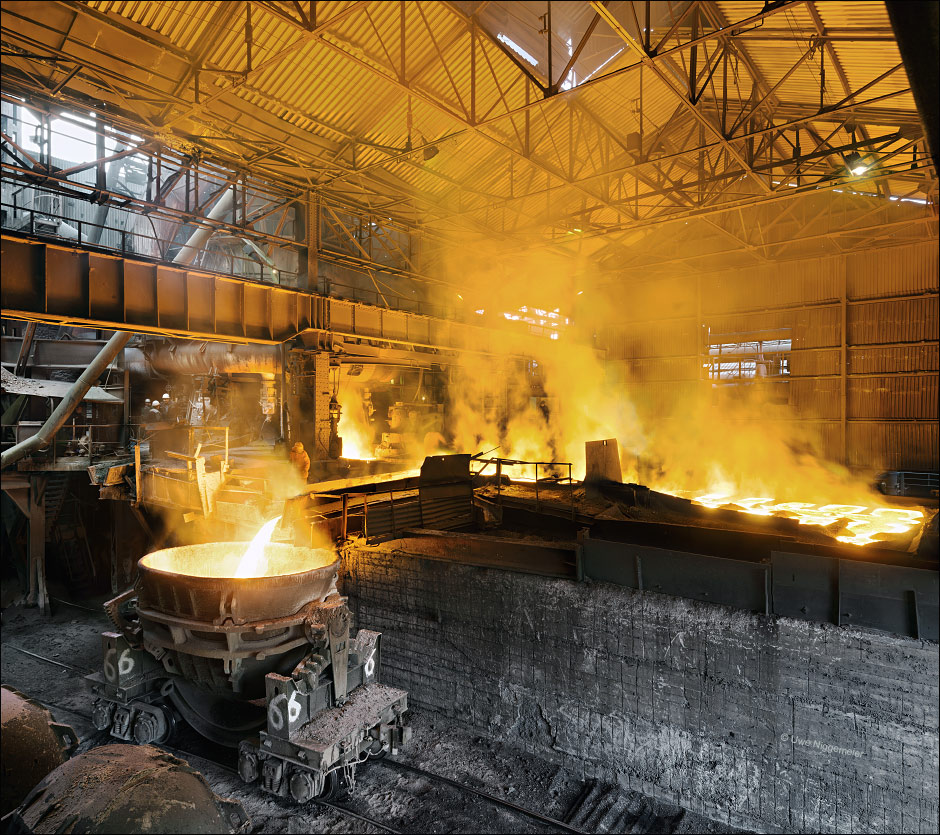
The 250m³ (9000 cu-foot) furnace produces ferromanganese casted in pig beds.
The Satka Iron Smelting Works is the oldest existing iron producer in the Ural and among the first to be built in Russia.
Settled on the banks of the Bolshaya Satka river the mill went into production in 1758 founded by Baron Stroganov.
Two blast furnaces and 12 hammers were in operation.
In the 1860ies a puddling steel mill was added.
Since 1910 ferro alloys were produced.
In the 1930ies more than 1300 people worked in the mill, cast iron became the major product.
After financial troubles the plant became partly idled in the 1990ies until the Ivanov family coming from the Swerdlowsk region took over in 2001 annd decided to switch production to high carbon ferromanganese an alloying element for the steel industry.
Satka Iron Smelting Works today runs two blast furnaces of 250m³ and 350m³.
Further images at Stahlseite.

